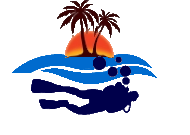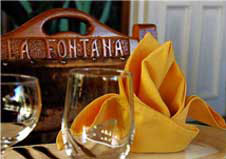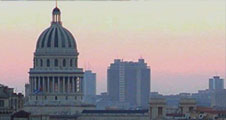Cuban provinces: Guantánamo
Guantánamo is the province of Cuba located at the eastern end of the Island. This is a predominantly mountainous region of deep contrasts, and the only place in the country where you can find semidesert landscapes.
There are between the Cuban capital and this territory little more than 900 kilometers (part of which is illegally occupied by an American aero naval base).
The main door of this province for international tourism is the Baracoa, Prime City of Cuba.
Nuestra Señora de la Asunción de Baracoa (1512) was the first of seven villas founded in the largest of the West Indies by the Spanish Diego Velázquez, becoming indeed the first capital and Episcopate of Cuba. Baracoa is today a colorful town with 900 km2 of surface, which preserves in its outskirts forests that are similar to those of the colonial times, identified by many with a sui generis flat top mountain baptized under the name of Yunque de Baracoa (Anvil of Baracoa).
The road access to this town is by itself an attraction for visitors, since it has to be done by La Farola, an ascending spiral road built during the first half of the 1960's, with 11 hanging bridges whose maximum height is located at a place known as Altos de Cotilla (Cotilla Heights), 600 hundred meters above the sea level. Nevertheless, the city has an national airport which handles the operations of small and middle size airplanes.
Baracoa still preserves clear evidence of the solid system of colonial forts, like Forts Matachín, where the Municipal Museum is located; la Punta; Seboruco; and the fortified towers of Joa; Caguase or the Castle of the Villa itself, which was later turned into a comfortable hotel; all of them built to defend the city form the siege of pirates and corsairs.
Furthermore, its church preserves the Cruz de la Parra (Croos from La Parra) -first Christian symbol found in the island- out of the 29 placed in different places by the admiral from Genova, Christopher Columbus, during his discovery journey to the so called New Continent.
The Duaba obelisk, placed where 2nd Lieutenant of the Liberation Army Antonio Maceo y Grajales, one of the most relevant martyrs of the national independence war, disembarked on December 1 of 1895; rivers Miel, Duaba, Yumurí and Toa, all of them appropriate places for a ride on a cayuca (typical boat of the region); Paso de Los Alemanes, a mountain split like a wedge on the way to Punta de Maisí, located on the furthest place to the east of the Island; are all places to be considered in the route of all visitors. As well as the beach of Maguana; Los Tibaracones del Alto del Pino, outstanding natural accidents; the terraces of La Máquina or Los Monitongos de Hatibonico and the National Park Alejandro Humboldt, which is located in the mountains of Moa-Sagua-Baracoa, where the largest rivers and forests of the country meet.
Guantánamo is the province of Cuba located at the eastern end of the Island. This is a predominantly mountainous region of deep contrasts, and the only place in the country where you can find semidesert landscapes.
There are between the Cuban capital and this territory little more than 900 kilometers (part of which is illegally occupied by an American aero naval base).
The main door of this province for international tourism is the Baracoa, Prime City of Cuba.
Nuestra Señora de la Asunción de Baracoa (1512) was the first of seven villas founded in the largest of the West Indies by the Spanish Diego Velázquez, becoming indeed the first capital and Episcopate of Cuba. Baracoa is today a colorful town with 900 km2 of surface, which preserves in its outskirts forests that are similar to those of the colonial times, identified by many with a sui generis flat top mountain baptized under the name of Yunque de Baracoa (Anvil of Baracoa).
The road access to this town is by itself an attraction for visitors, since it has to be done by La Farola, an ascending spiral road built during the first half of the 1960's, with 11 hanging bridges whose maximum height is located at a place known as Altos de Cotilla (Cotilla Heights), 600 hundred meters above the sea level. Nevertheless, the city has an national airport which handles the operations of small and middle size airplanes.
Baracoa still preserves clear evidence of the solid system of colonial forts, like Forts Matachín, where the Municipal Museum is located; la Punta; Seboruco; and the fortified towers of Joa; Caguase or the Castle of the Villa itself, which was later turned into a comfortable hotel; all of them built to defend the city form the siege of pirates and corsairs.
Furthermore, its church preserves the Cruz de la Parra (Croos from La Parra) -first Christian symbol found in the island- out of the 29 placed in different places by the admiral from Genova, Christopher Columbus, during his discovery journey to the so called New Continent.
The Duaba obelisk, placed where 2nd Lieutenant of the Liberation Army Antonio Maceo y Grajales, one of the most relevant martyrs of the national independence war, disembarked on December 1 of 1895; rivers Miel, Duaba, Yumurí and Toa, all of them appropriate places for a ride on a cayuca (typical boat of the region); Paso de Los Alemanes, a mountain split like a wedge on the way to Punta de Maisí, located on the furthest place to the east of the Island; are all places to be considered in the route of all visitors. As well as the beach of Maguana; Los Tibaracones del Alto del Pino, outstanding natural accidents; the terraces of La Máquina or Los Monitongos de Hatibonico and the National Park Alejandro Humboldt, which is located in the mountains of Moa-Sagua-Baracoa, where the largest rivers and forests of the country meet























